This list includes all new Wiley eBook titles published in 2015. For new titles added in July and August 2015 ONLY, click here.
Advanced processing and manufacturing technologies for nanostructured and multifunctional materials : Ceramic Engineering and Science Proceedings, volume 35 issue 6 / edited by T. Ohji, M. Singh, and S. Mathur
 "Over 170 contributions (invited talks, oral presentations, and posters) were presented by participants from universities, research institutions, and industry, which offered interdisciplinary discussions indicating strong scientific and technological interest in the field of nanostructured systems. This issue contains 23 peer-reviewed papers that cover various aspects and the latest developments related to nanoscaled materials and functional ceramics."
"Over 170 contributions (invited talks, oral presentations, and posters) were presented by participants from universities, research institutions, and industry, which offered interdisciplinary discussions indicating strong scientific and technological interest in the field of nanostructured systems. This issue contains 23 peer-reviewed papers that cover various aspects and the latest developments related to nanoscaled materials and functional ceramics."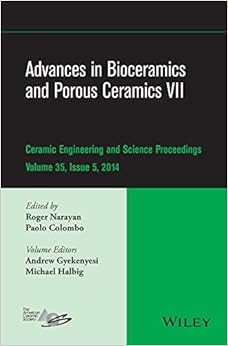 "A collection of 15 papers from The American Ceramic Society's 38th International Conference on Advanced Ceramics and Composites, held in Daytona Beach, Florida, January 26-31, 2014. This issue includes papers presented in Symposium 5 - Next Generation Bioceramics and Biocomposites and Symposium 9 - Porous Ceramics: Novel Developments and Applications [...] The "Next Generation Bioceramics" symposium addressed several areas associated with processing, characterization, modeling, and applications of bioceramic materials [...] In the "Porous Ceramics" symposium, the speakers discussed how they can tailor the characteristics of the porosity embedded in ceramic parts, including the total porosity, the average cell size, the cell size distribution, and the degree of interconnectivity among the cells."
"A collection of 15 papers from The American Ceramic Society's 38th International Conference on Advanced Ceramics and Composites, held in Daytona Beach, Florida, January 26-31, 2014. This issue includes papers presented in Symposium 5 - Next Generation Bioceramics and Biocomposites and Symposium 9 - Porous Ceramics: Novel Developments and Applications [...] The "Next Generation Bioceramics" symposium addressed several areas associated with processing, characterization, modeling, and applications of bioceramic materials [...] In the "Porous Ceramics" symposium, the speakers discussed how they can tailor the characteristics of the porosity embedded in ceramic parts, including the total porosity, the average cell size, the cell size distribution, and the degree of interconnectivity among the cells."
"The first and second part cover the most relevant synthetic and bioinspired nanomaterials, including surfaces with extreme wettability properties, functional materials with improved adhesion or structural or functional systems based on the complex and hierarchical organization of natural composites. These lessons from nature are explored in the last section where bioinspired materials are proposed for biomedical applications, showing their potential for future applications in drug delivery, theragnosis, and regenerative medicine."
The dentist's quick guide to medical conditions / by M.A. Weinberg, S.L. Segelnick, J.S. Insler, and S. Kramer

"With increasing numbers of dental patients being elderly or having medical conditions, it is important for the dentist to understand how these conditions may impact dental treatment. The Dentist's Quick Guide to Medical Conditions presents the relevant information dentists need-symptoms, diagnostic tests, medications prescribed, and dental management-for each disease and condition. Chapters will focus on each major bodily system, including respiratory, cardiovascular, hematologic, endocrine, gastrointestinal, immune, nervous, reproductive, and urinary, as well as chapters on the liver, kidneys, skin, and psychological conditions. Appendices list guidelines for antibiotic prophylaxis, additional conditions requiring antibiotics, and a quick list of diagnostic tests."
Local and regional flaps in head and neck reconstruction : a practical approach / by R. Fernandes
 This book "provides comprehensive, step-by-step instruction for flap raising and insetting for the head and neck region. Ideal for oral and maxillofacial surgeons, facial plastic surgeons, and head and neck surgeons, the book serves as a useful guide to planning reconstructive cases and an easily accessible reference prior to operation."
This book "provides comprehensive, step-by-step instruction for flap raising and insetting for the head and neck region. Ideal for oral and maxillofacial surgeons, facial plastic surgeons, and head and neck surgeons, the book serves as a useful guide to planning reconstructive cases and an easily accessible reference prior to operation."
The book "is logically organized into 24 chapters, each focusing on a local or regional flap, or a special site reconstruction. Chapters focused on a particular flap will begin with a detailed description of the relevant anatomy and discuss potential applications of the flap before moving into a detailed step-by-step description of how to elevated and transfer the flap to the defect site. Potential complications will also be addressed. Well-illustrated with more than 800 clinical photographs and with a website featuring surgical procedures, this book is an ideal reference for those new to practice and experts alike.
Minimally invasive periodontal therapy : clinical techniques and visualization technology / edited by S.K. Harrel and T.G. Wilson
 "The long-term success of periodontal therapy is dependent on proper diagnosis and removal of subgingival tooth-borne accretions in the form of calculus and bacteria. From a clinical perspective, better visualization during the diagnostic and therapeutic phases has been shown to yield better results compared to traditional approaches."
"The long-term success of periodontal therapy is dependent on proper diagnosis and removal of subgingival tooth-borne accretions in the form of calculus and bacteria. From a clinical perspective, better visualization during the diagnostic and therapeutic phases has been shown to yield better results compared to traditional approaches."
This book "evaluates the advantages of using minimal invasive techniques, the technologies available for enhancing visualization during minimally invasive therapy, and step-by-step illustrates the clinical use of each technique. Each chapter addresses the advantages and disadvantages of minimally invasive therapies, rationale for the approach, and the advantages and limitations of each of the current methods of improving visualization. The chapters then provide an evidence-based review of the technologies and procedures, and end with case studies for each visualization procedure, featuring clinical photographs."
Orthodontically driven corticotomy : tissue engineering to enhance orthodontic and multidisciplinary treatment / edited by F. Brugnami and A. Caiazzo
 "The first book of its kind, Orthodontically Driven Corticotomy describes how to apply this innovative technique to orthodontic treatment protocols. More than simply discussing orthodontic applications, the editors demonstrate how corticotomies enhance inter- and multidisciplinary treatments. Different surgical approaches are described, with indications on how to select the most appropriate one, to increase efficiency of orthodontic movement, and minimize the surgical exposure for the patient at the same time. Readers learn how to apply the technique to expand the basal bone, regenerate periodontal tissues, combine corticotomy and anchorage devices, manage partial edentulism, treat impacted teeth, and become more efficient in orthodontic treatment. Surgical steps are demonstrated with more than 650 clinical photographs and 200 illustrations."
"The first book of its kind, Orthodontically Driven Corticotomy describes how to apply this innovative technique to orthodontic treatment protocols. More than simply discussing orthodontic applications, the editors demonstrate how corticotomies enhance inter- and multidisciplinary treatments. Different surgical approaches are described, with indications on how to select the most appropriate one, to increase efficiency of orthodontic movement, and minimize the surgical exposure for the patient at the same time. Readers learn how to apply the technique to expand the basal bone, regenerate periodontal tissues, combine corticotomy and anchorage devices, manage partial edentulism, treat impacted teeth, and become more efficient in orthodontic treatment. Surgical steps are demonstrated with more than 650 clinical photographs and 200 illustrations."
Polysaccharide-based nanocrystals : chemistry and applications / edited by J. Huang, P.R. Chang, N. Lin and A. Dufresne
 "Polysaccharide nanocrystals, an emerging green nanoingredient (nanomaterial) with high crystallinity obtained by acid hydrolysis of biomass-based polysaccharides, are of scientific and economic significance owing to their abundance, biodegradation potential, and fascinating functional performance. This versatile class of materials can be used in nanocomposites such as rubber or polyester, and in functional materials such as drug carriers, bio-inspired mechanically adaptive materials or membranes, to name but a few.
"Polysaccharide nanocrystals, an emerging green nanoingredient (nanomaterial) with high crystallinity obtained by acid hydrolysis of biomass-based polysaccharides, are of scientific and economic significance owing to their abundance, biodegradation potential, and fascinating functional performance. This versatile class of materials can be used in nanocomposites such as rubber or polyester, and in functional materials such as drug carriers, bio-inspired mechanically adaptive materials or membranes, to name but a few.
"This book encompasses the extraction, structure, properties, surface modification, theory, and mechanism of diverse functional systems derived from polysaccharide nanocrystals.
"This highly sought-after trendy book is currently the only monograph devoted to the most current knowledge pertaining to this exciting subject area. It is ideal for researchers and stakeholders who wish to broaden and deepen their knowledge in the fast-moving and rapidly expanding R&D field of polymeric materials."
Note that you will not find the following titles in the U of T library catalogue (but we are working on remedying this!):
Advanced theranostic materials / edited by A. Tiwari, H.K. Patra and J.-W. Choi
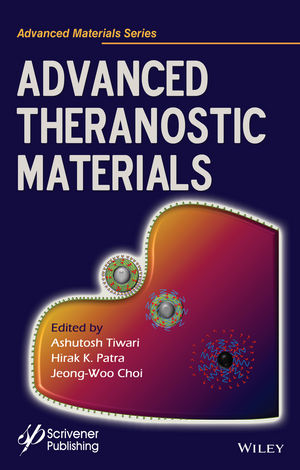 This book "covers the recent advances in the development on the regulation of such theragnosis system and their biomedical perspectives to act as a future nanomedicine. Advanced Theranostics Materials is written by a distinguished group of contributors and provides comprehensive coverage of the current literature, up-to-date overview of all aspects of advanced theranostics materials ranging from system biology, diagnostics, imaging, image-guided therapy, therapeutics, biosensors, and translational medicine and personalized medicine, as well as the much broader task of covering most topics of biomedical research." The books focuses on the following topics:
This book "covers the recent advances in the development on the regulation of such theragnosis system and their biomedical perspectives to act as a future nanomedicine. Advanced Theranostics Materials is written by a distinguished group of contributors and provides comprehensive coverage of the current literature, up-to-date overview of all aspects of advanced theranostics materials ranging from system biology, diagnostics, imaging, image-guided therapy, therapeutics, biosensors, and translational medicine and personalized medicine, as well as the much broader task of covering most topics of biomedical research." The books focuses on the following topics:
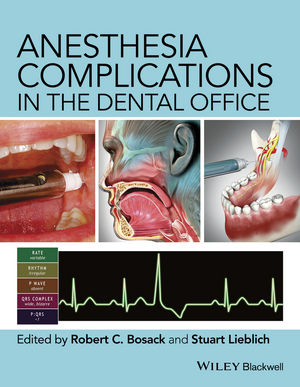 "Anesthetic complications, which range from simple annoyances to patient mortality, are inevitable, given the many and complex interactions of doctor, patient, personnel, and facility. Anesthesia Complications in the Dental Office helps dentists minimize the frequency and severity of adverse events by providing concise and clinically relevant information that can be put to everyday use."
"Anesthetic complications, which range from simple annoyances to patient mortality, are inevitable, given the many and complex interactions of doctor, patient, personnel, and facility. Anesthesia Complications in the Dental Office helps dentists minimize the frequency and severity of adverse events by providing concise and clinically relevant information that can be put to everyday use."
Atlas of operative oral and maxillofacial surgery / edited by C.J. Haggerty and R.M. Laughlin
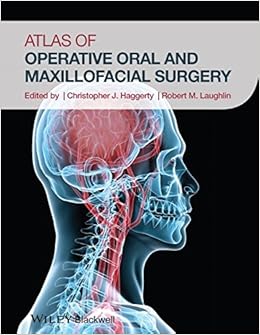 This book "is an innovative, multidisciplinary, contemporary surgical atlas covering core aspects of oral and maxillofacial surgery, head and neck reconstructive surgery and facial cosmetic surgery. The text is constructed as a procedure-based surgical atlas with special emphasis placed on depicting surgical techniques with high-resolution color illustrations and images. Chapters are written by experts in their field and are designed to provide high-yield information pertaining to procedure indications, contraindications, pertinent anatomy, techniques, post-operative management, complications and key points. Each chapter concludes with a detailed photographic case report illustrating pertinent procedure specifics such as locations for incisions, anatomical planes of dissection, key steps in the procedure, radiographs findings and pre- and postoperative photographs. Procedures are organized by sections to include: dentoalveolar and implant surgery, odontogenic head and neck infections, maxillofacial trauma surgery, orthognathic and craniofacial surgery, tempomandibular joint surgery, infections of the head and neck, facial cosmetic surgery, and pathology and reconstructive surgery."
This book "is an innovative, multidisciplinary, contemporary surgical atlas covering core aspects of oral and maxillofacial surgery, head and neck reconstructive surgery and facial cosmetic surgery. The text is constructed as a procedure-based surgical atlas with special emphasis placed on depicting surgical techniques with high-resolution color illustrations and images. Chapters are written by experts in their field and are designed to provide high-yield information pertaining to procedure indications, contraindications, pertinent anatomy, techniques, post-operative management, complications and key points. Each chapter concludes with a detailed photographic case report illustrating pertinent procedure specifics such as locations for incisions, anatomical planes of dissection, key steps in the procedure, radiographs findings and pre- and postoperative photographs. Procedures are organized by sections to include: dentoalveolar and implant surgery, odontogenic head and neck infections, maxillofacial trauma surgery, orthognathic and craniofacial surgery, tempomandibular joint surgery, infections of the head and neck, facial cosmetic surgery, and pathology and reconstructive surgery."
Atlas of temporomandibular joint surgery, 2nd edition / edited by P.D. Quinn and E.J. Granquist
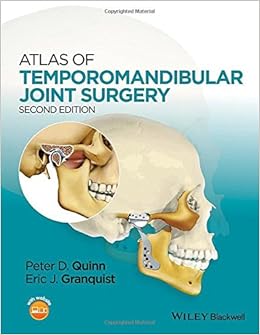 "This second edition of the Atlas of Temporomandibular Joint Surgery is a major revision of Dr. Quinn's classic work, taking into account new procedures, equipment, and evidence-based findings from the latest research in TMJ treatment. Assuming that readers are familiar with non-surgical therapies to correct temporomandibular pain and disorders, Drs. Quinn and Granquist focus on the surgical remedies for disorders that are beyond conservative treatment. This concise, how-to surgical atlas guides both the novice and experienced surgeon through the intra-articular and extra-articular procedures that have proven efficacious in the treatment of advanced craniomandibular dysfunction. Chapters take readers through decision making for TMJ surgery, diagnostic imaging methods, surgical approaches, surgery for internal derangements, trauma, osseous surgical procedures, total joint replacement, and pathologies."
"This second edition of the Atlas of Temporomandibular Joint Surgery is a major revision of Dr. Quinn's classic work, taking into account new procedures, equipment, and evidence-based findings from the latest research in TMJ treatment. Assuming that readers are familiar with non-surgical therapies to correct temporomandibular pain and disorders, Drs. Quinn and Granquist focus on the surgical remedies for disorders that are beyond conservative treatment. This concise, how-to surgical atlas guides both the novice and experienced surgeon through the intra-articular and extra-articular procedures that have proven efficacious in the treatment of advanced craniomandibular dysfunction. Chapters take readers through decision making for TMJ surgery, diagnostic imaging methods, surgical approaches, surgery for internal derangements, trauma, osseous surgical procedures, total joint replacement, and pathologies."
Bioceramic coatings for medical implants / by R.B. Heimann and H.D. Lehmann
"Reflecting the progress in recent years, this book provides in-depth information on the preparation, chemistry, and engineering of bioceramic coatings for medical implants. It is authored by two renowned experts with over 30 years of experience in industry and academia, who know the potentials and pitfalls of the techniques concerned.
 "Following an introduction to the principles of biocompatibility, they present the structures and properties of various bioceramics from alumina to zirconia. The main part of the work focuses on coating technologies, such as chemical vapor deposition, sol-gel deposition and thermal spraying. There then follows a discussion of the major interactions of bioceramics with bone or tissue cells, complemented by an overview of the in-vitro testing methods of the biomineralization properties of bioceramics. The text is rounded off by chapters on the functionalization of bioceramic coatings and a look at future trends.
"Following an introduction to the principles of biocompatibility, they present the structures and properties of various bioceramics from alumina to zirconia. The main part of the work focuses on coating technologies, such as chemical vapor deposition, sol-gel deposition and thermal spraying. There then follows a discussion of the major interactions of bioceramics with bone or tissue cells, complemented by an overview of the in-vitro testing methods of the biomineralization properties of bioceramics. The text is rounded off by chapters on the functionalization of bioceramic coatings and a look at future trends.
"As a result, the authors bring together all aspects of the latest techniques for designing, depositing, testing, and implementing improved and novel bioceramic coating compositions, providing a full yet concise overview for beginners and professionals."
Biological mechanisms of tooth movement / edited by V. Krishnan and Z. Davidovitch
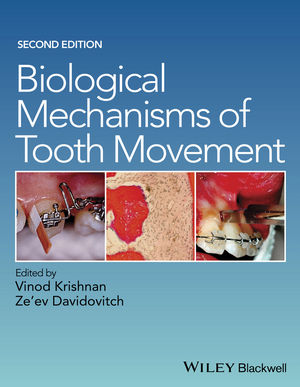 This book "is an authoritative reference to the scientific foundations underpinning clinical orthodontics. Led by an expert editor team and with contributions from an international group of contributors, the book covers key topics including bone biology, the effects of mechanical loading on tissues and cells, genetics, inflammation, tissue remodeling and the effects of diet, drugs, and systemic diseases. Highly-illustrated throughout, this second edition has been fully revised, updated and expanded to new developments in genomics, rapid orthodontics and current controversies in tooth movement research. Trainees, qualified specialists and researchers in orthodontics can rely on this comprehensive text to inform them about the clinical and scientific implications of the biological mechanisms involved in the movement of teeth."
This book "is an authoritative reference to the scientific foundations underpinning clinical orthodontics. Led by an expert editor team and with contributions from an international group of contributors, the book covers key topics including bone biology, the effects of mechanical loading on tissues and cells, genetics, inflammation, tissue remodeling and the effects of diet, drugs, and systemic diseases. Highly-illustrated throughout, this second edition has been fully revised, updated and expanded to new developments in genomics, rapid orthodontics and current controversies in tooth movement research. Trainees, qualified specialists and researchers in orthodontics can rely on this comprehensive text to inform them about the clinical and scientific implications of the biological mechanisms involved in the movement of teeth."
Biosurfaces : a materials science and engineering perspective / by K. Balani, V. Verma, A. Agarwal and R. Narayan
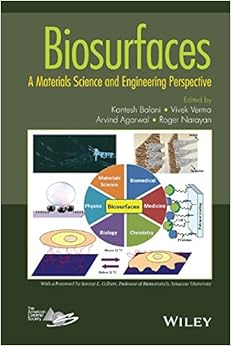 "Ideal as a graduate textbook, this title is aimed at helping design effective biomaterials, taking into account the complex interactions that occur at the interface when a synthetic material is inserted into a living system. Surface reactivity, biochemistry, substrates, cleaning, preparation, and coatings are presented, with numerous case studies and applications throughout.
"Ideal as a graduate textbook, this title is aimed at helping design effective biomaterials, taking into account the complex interactions that occur at the interface when a synthetic material is inserted into a living system. Surface reactivity, biochemistry, substrates, cleaning, preparation, and coatings are presented, with numerous case studies and applications throughout.
"Highlights include:
The dentist's quick guide to medical conditions / by M.A. Weinberg, S.L. Segelnick, J.S. Insler, and S. Kramer
"With increasing numbers of dental patients being elderly or having medical conditions, it is important for the dentist to understand how these conditions may impact dental treatment. The Dentist's Quick Guide to Medical Conditions presents the relevant information dentists need-symptoms, diagnostic tests, medications prescribed, and dental management-for each disease and condition. Chapters will focus on each major bodily system, including respiratory, cardiovascular, hematologic, endocrine, gastrointestinal, immune, nervous, reproductive, and urinary, as well as chapters on the liver, kidneys, skin, and psychological conditions. Appendices list guidelines for antibiotic prophylaxis, additional conditions requiring antibiotics, and a quick list of diagnostic tests."
Local and regional flaps in head and neck reconstruction : a practical approach / by R. Fernandes
The book "is logically organized into 24 chapters, each focusing on a local or regional flap, or a special site reconstruction. Chapters focused on a particular flap will begin with a detailed description of the relevant anatomy and discuss potential applications of the flap before moving into a detailed step-by-step description of how to elevated and transfer the flap to the defect site. Potential complications will also be addressed. Well-illustrated with more than 800 clinical photographs and with a website featuring surgical procedures, this book is an ideal reference for those new to practice and experts alike.
Minimally invasive periodontal therapy : clinical techniques and visualization technology / edited by S.K. Harrel and T.G. Wilson
This book "evaluates the advantages of using minimal invasive techniques, the technologies available for enhancing visualization during minimally invasive therapy, and step-by-step illustrates the clinical use of each technique. Each chapter addresses the advantages and disadvantages of minimally invasive therapies, rationale for the approach, and the advantages and limitations of each of the current methods of improving visualization. The chapters then provide an evidence-based review of the technologies and procedures, and end with case studies for each visualization procedure, featuring clinical photographs."
Orthodontically driven corticotomy : tissue engineering to enhance orthodontic and multidisciplinary treatment / edited by F. Brugnami and A. Caiazzo
Polysaccharide-based nanocrystals : chemistry and applications / edited by J. Huang, P.R. Chang, N. Lin and A. Dufresne
"This book encompasses the extraction, structure, properties, surface modification, theory, and mechanism of diverse functional systems derived from polysaccharide nanocrystals.
"This highly sought-after trendy book is currently the only monograph devoted to the most current knowledge pertaining to this exciting subject area. It is ideal for researchers and stakeholders who wish to broaden and deepen their knowledge in the fast-moving and rapidly expanding R&D field of polymeric materials."
Note that you will not find the following titles in the U of T library catalogue (but we are working on remedying this!):
Advanced theranostic materials / edited by A. Tiwari, H.K. Patra and J.-W. Choi
 This book "covers the recent advances in the development on the regulation of such theragnosis system and their biomedical perspectives to act as a future nanomedicine. Advanced Theranostics Materials is written by a distinguished group of contributors and provides comprehensive coverage of the current literature, up-to-date overview of all aspects of advanced theranostics materials ranging from system biology, diagnostics, imaging, image-guided therapy, therapeutics, biosensors, and translational medicine and personalized medicine, as well as the much broader task of covering most topics of biomedical research." The books focuses on the following topics:
This book "covers the recent advances in the development on the regulation of such theragnosis system and their biomedical perspectives to act as a future nanomedicine. Advanced Theranostics Materials is written by a distinguished group of contributors and provides comprehensive coverage of the current literature, up-to-date overview of all aspects of advanced theranostics materials ranging from system biology, diagnostics, imaging, image-guided therapy, therapeutics, biosensors, and translational medicine and personalized medicine, as well as the much broader task of covering most topics of biomedical research." The books focuses on the following topics:- Part 1: System biology and translational medicine
- Part 2: Imaging and therapeutics
- Part 3: Diagnostics and featured prognostics
 "Anesthetic complications, which range from simple annoyances to patient mortality, are inevitable, given the many and complex interactions of doctor, patient, personnel, and facility. Anesthesia Complications in the Dental Office helps dentists minimize the frequency and severity of adverse events by providing concise and clinically relevant information that can be put to everyday use."
"Anesthetic complications, which range from simple annoyances to patient mortality, are inevitable, given the many and complex interactions of doctor, patient, personnel, and facility. Anesthesia Complications in the Dental Office helps dentists minimize the frequency and severity of adverse events by providing concise and clinically relevant information that can be put to everyday use."
This book "presents the most up-to-date information on treating anesthesia complications and medical emergencies. Drs. Bosack and Lieblich and a team of expert contributors discuss patient risk assessment; considerations for special needs and medically compromised patients; routinely administered anesthetic agents; adversities that can arise before, during, and after administration of anesthesia; and emergency drugs and equipment. A must-have reference for every dental office."
Atlas of operative oral and maxillofacial surgery / edited by C.J. Haggerty and R.M. Laughlin
 This book "is an innovative, multidisciplinary, contemporary surgical atlas covering core aspects of oral and maxillofacial surgery, head and neck reconstructive surgery and facial cosmetic surgery. The text is constructed as a procedure-based surgical atlas with special emphasis placed on depicting surgical techniques with high-resolution color illustrations and images. Chapters are written by experts in their field and are designed to provide high-yield information pertaining to procedure indications, contraindications, pertinent anatomy, techniques, post-operative management, complications and key points. Each chapter concludes with a detailed photographic case report illustrating pertinent procedure specifics such as locations for incisions, anatomical planes of dissection, key steps in the procedure, radiographs findings and pre- and postoperative photographs. Procedures are organized by sections to include: dentoalveolar and implant surgery, odontogenic head and neck infections, maxillofacial trauma surgery, orthognathic and craniofacial surgery, tempomandibular joint surgery, infections of the head and neck, facial cosmetic surgery, and pathology and reconstructive surgery."
This book "is an innovative, multidisciplinary, contemporary surgical atlas covering core aspects of oral and maxillofacial surgery, head and neck reconstructive surgery and facial cosmetic surgery. The text is constructed as a procedure-based surgical atlas with special emphasis placed on depicting surgical techniques with high-resolution color illustrations and images. Chapters are written by experts in their field and are designed to provide high-yield information pertaining to procedure indications, contraindications, pertinent anatomy, techniques, post-operative management, complications and key points. Each chapter concludes with a detailed photographic case report illustrating pertinent procedure specifics such as locations for incisions, anatomical planes of dissection, key steps in the procedure, radiographs findings and pre- and postoperative photographs. Procedures are organized by sections to include: dentoalveolar and implant surgery, odontogenic head and neck infections, maxillofacial trauma surgery, orthognathic and craniofacial surgery, tempomandibular joint surgery, infections of the head and neck, facial cosmetic surgery, and pathology and reconstructive surgery."Atlas of temporomandibular joint surgery, 2nd edition / edited by P.D. Quinn and E.J. Granquist
 "This second edition of the Atlas of Temporomandibular Joint Surgery is a major revision of Dr. Quinn's classic work, taking into account new procedures, equipment, and evidence-based findings from the latest research in TMJ treatment. Assuming that readers are familiar with non-surgical therapies to correct temporomandibular pain and disorders, Drs. Quinn and Granquist focus on the surgical remedies for disorders that are beyond conservative treatment. This concise, how-to surgical atlas guides both the novice and experienced surgeon through the intra-articular and extra-articular procedures that have proven efficacious in the treatment of advanced craniomandibular dysfunction. Chapters take readers through decision making for TMJ surgery, diagnostic imaging methods, surgical approaches, surgery for internal derangements, trauma, osseous surgical procedures, total joint replacement, and pathologies."
"This second edition of the Atlas of Temporomandibular Joint Surgery is a major revision of Dr. Quinn's classic work, taking into account new procedures, equipment, and evidence-based findings from the latest research in TMJ treatment. Assuming that readers are familiar with non-surgical therapies to correct temporomandibular pain and disorders, Drs. Quinn and Granquist focus on the surgical remedies for disorders that are beyond conservative treatment. This concise, how-to surgical atlas guides both the novice and experienced surgeon through the intra-articular and extra-articular procedures that have proven efficacious in the treatment of advanced craniomandibular dysfunction. Chapters take readers through decision making for TMJ surgery, diagnostic imaging methods, surgical approaches, surgery for internal derangements, trauma, osseous surgical procedures, total joint replacement, and pathologies." Bioceramic coatings for medical implants / by R.B. Heimann and H.D. Lehmann
"Reflecting the progress in recent years, this book provides in-depth information on the preparation, chemistry, and engineering of bioceramic coatings for medical implants. It is authored by two renowned experts with over 30 years of experience in industry and academia, who know the potentials and pitfalls of the techniques concerned.
 "Following an introduction to the principles of biocompatibility, they present the structures and properties of various bioceramics from alumina to zirconia. The main part of the work focuses on coating technologies, such as chemical vapor deposition, sol-gel deposition and thermal spraying. There then follows a discussion of the major interactions of bioceramics with bone or tissue cells, complemented by an overview of the in-vitro testing methods of the biomineralization properties of bioceramics. The text is rounded off by chapters on the functionalization of bioceramic coatings and a look at future trends.
"Following an introduction to the principles of biocompatibility, they present the structures and properties of various bioceramics from alumina to zirconia. The main part of the work focuses on coating technologies, such as chemical vapor deposition, sol-gel deposition and thermal spraying. There then follows a discussion of the major interactions of bioceramics with bone or tissue cells, complemented by an overview of the in-vitro testing methods of the biomineralization properties of bioceramics. The text is rounded off by chapters on the functionalization of bioceramic coatings and a look at future trends."As a result, the authors bring together all aspects of the latest techniques for designing, depositing, testing, and implementing improved and novel bioceramic coating compositions, providing a full yet concise overview for beginners and professionals."
Biological mechanisms of tooth movement / edited by V. Krishnan and Z. Davidovitch
 This book "is an authoritative reference to the scientific foundations underpinning clinical orthodontics. Led by an expert editor team and with contributions from an international group of contributors, the book covers key topics including bone biology, the effects of mechanical loading on tissues and cells, genetics, inflammation, tissue remodeling and the effects of diet, drugs, and systemic diseases. Highly-illustrated throughout, this second edition has been fully revised, updated and expanded to new developments in genomics, rapid orthodontics and current controversies in tooth movement research. Trainees, qualified specialists and researchers in orthodontics can rely on this comprehensive text to inform them about the clinical and scientific implications of the biological mechanisms involved in the movement of teeth."
This book "is an authoritative reference to the scientific foundations underpinning clinical orthodontics. Led by an expert editor team and with contributions from an international group of contributors, the book covers key topics including bone biology, the effects of mechanical loading on tissues and cells, genetics, inflammation, tissue remodeling and the effects of diet, drugs, and systemic diseases. Highly-illustrated throughout, this second edition has been fully revised, updated and expanded to new developments in genomics, rapid orthodontics and current controversies in tooth movement research. Trainees, qualified specialists and researchers in orthodontics can rely on this comprehensive text to inform them about the clinical and scientific implications of the biological mechanisms involved in the movement of teeth."Biosurfaces : a materials science and engineering perspective / by K. Balani, V. Verma, A. Agarwal and R. Narayan
 "Ideal as a graduate textbook, this title is aimed at helping design effective biomaterials, taking into account the complex interactions that occur at the interface when a synthetic material is inserted into a living system. Surface reactivity, biochemistry, substrates, cleaning, preparation, and coatings are presented, with numerous case studies and applications throughout.
"Ideal as a graduate textbook, this title is aimed at helping design effective biomaterials, taking into account the complex interactions that occur at the interface when a synthetic material is inserted into a living system. Surface reactivity, biochemistry, substrates, cleaning, preparation, and coatings are presented, with numerous case studies and applications throughout. "Highlights include:
- Starts with concepts and works up to real-life applications such as implantable devices, medical devices, prosthetics, and drug delivery technology
- Addresses surface reactivity, requirements for surface coating, cleaning and preparation techniques, and characterization
- Discusses the biological response to coatings
- Addresses biomaterial-tissue interaction
- Incorporates nanomechanical properties and processing strategies"
Clinical applications of digital dental technology / edited by R. Masri and C.F. Driscoll
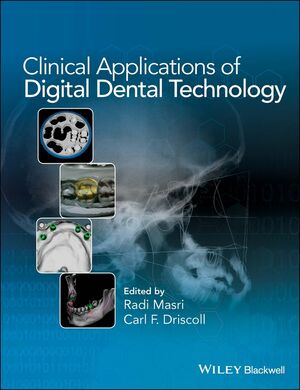 "Digital equipment in all dental practices is commonplace. From digital imaging through electronic recordkeeping, general dentists and specialists are seeing more accurate diagnoses, faster treatment times, and lower costs for equipment.
"Digital equipment in all dental practices is commonplace. From digital imaging through electronic recordkeeping, general dentists and specialists are seeing more accurate diagnoses, faster treatment times, and lower costs for equipment.
"Here in one volume is a comprehensive look at the digital technology available, describing indications, contraindications, advantages, disadvantages, limitations, and applications in the various dental fields. Included are digital imaging, digital impressions, digital operative dentistry, digital prosthodontics, digital implant fabrication and placement, and digital applications in endodontics, orthodontics, and oral surgery. The book is ideal for dental students seeking a reference for digital dental technology and for seasoned practitioners and specialists interested in incorporating digital technology in their daily practice."
Early childhood and oral health, 2nd edition / edited by J.H. Berg and R.L. Slayton
"Dental caries has been called a "silent epidemic" and is the most prevalent chronic disease affecting children. Though much has been written on the science and practice of managing this disease, publications are diverse in their loci, preventing easy access to the reader. Early Childhood Oral Health coalesces all the important information related to this topic in a comprehensive reference for students, academics, and practitioners.
 "This second edition expands the scope of the first and puts an additional focus on interprofessional and global efforts that are necessary to manage the growing disease crisis and screening and risk assessment efforts that have expanded with the boom of new technologies. With updated references and incorporating the latest research, chapters address the biology and epidemiology of caries, the clinical management of early childhood caries, risk assessment, and early diagnosis. Other topics include public health approaches to managing caries worldwide, implementation of new caries prevention programs, fluoride regimens, and community programs, and family oral health education. Brand new are four chapters on the medical management of early childhood caries, considerations for children with special needs, interprofessional education and practice, and how the newest policy issues and the Affordable Care Act affect dental care.
"This second edition expands the scope of the first and puts an additional focus on interprofessional and global efforts that are necessary to manage the growing disease crisis and screening and risk assessment efforts that have expanded with the boom of new technologies. With updated references and incorporating the latest research, chapters address the biology and epidemiology of caries, the clinical management of early childhood caries, risk assessment, and early diagnosis. Other topics include public health approaches to managing caries worldwide, implementation of new caries prevention programs, fluoride regimens, and community programs, and family oral health education. Brand new are four chapters on the medical management of early childhood caries, considerations for children with special needs, interprofessional education and practice, and how the newest policy issues and the Affordable Care Act affect dental care.
"A must-read for pediatric dentists, cariologists, public health dentists, and students in these fields, Early Childhood Oral Health is also relevant for pediatricians and pediatric nursing specialists worldwide."
Handbook of clinical techniques in pediatric dentistry / edited by J.A. Soxman
 This book "provides the clinician with an increased level of expertise and skills for timely identification and intervention for various presentations in the developing dentition. It also clearly describes procedures for treatment in the primary and young permanent dentitions, including pulp therapy for primary and young permanent molars, extractions, space maintenance, and more. The most commonly encountered treatment needs are discussed with the goal of increasing clinician and staff confidence while decreasing chair-time and stress. With an emphasis on practical instruction, The Handbook of Clinical Techniques in Pediatric Dentistry is ideal for pediatric and general dentists, pediatric residents, and dental students taking clinical pediatric courses."
This book "provides the clinician with an increased level of expertise and skills for timely identification and intervention for various presentations in the developing dentition. It also clearly describes procedures for treatment in the primary and young permanent dentitions, including pulp therapy for primary and young permanent molars, extractions, space maintenance, and more. The most commonly encountered treatment needs are discussed with the goal of increasing clinician and staff confidence while decreasing chair-time and stress. With an emphasis on practical instruction, The Handbook of Clinical Techniques in Pediatric Dentistry is ideal for pediatric and general dentists, pediatric residents, and dental students taking clinical pediatric courses."
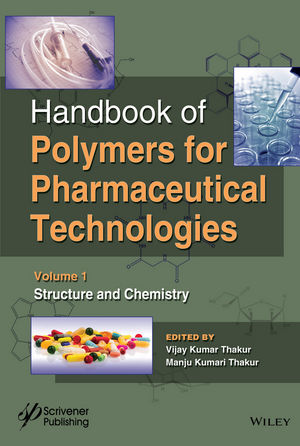 Handbook of polymers for pharmaceutical technologies : structure and chemistry, volume 1 / edited by V.K. Thakur and M.K. Thakur
Handbook of polymers for pharmaceutical technologies : structure and chemistry, volume 1 / edited by V.K. Thakur and M.K. Thakur
Handbook of polymers for pharmaceutical technologies : processing and applications, volume 2 / edited by V.K. Thakur and M.K. Thakur
"Polymers are one of the most fascinating materials of the present era finding their applications in almost every aspects of life. Polymers are either directly available in nature or are chemically synthesized and used depending upon the targeted applications. Advances in polymer science and the introduction of new polymers have resulted in the significant development of polymers with unique properties. Different kinds of polymers have been and will be one of the key in several applications in many of the advanced pharmaceutical research being carried out over the globe.
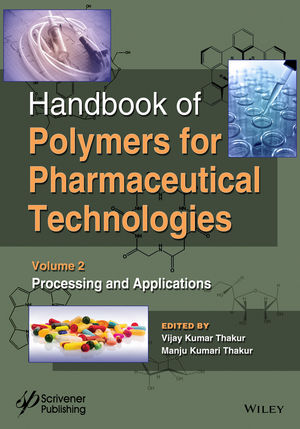 "This 4-partset of books contains precisely referenced chapters, emphasizing different kinds of polymers with basic fundamentals and practicality for application in diverse pharmaceutical technologies. The volumes aim at explaining basics of polymers based materials from different resources and their chemistry along with practical applications which present a future direction in the pharmaceutical industry. Each volume offer deep insight into the subject being treated."
"This 4-partset of books contains precisely referenced chapters, emphasizing different kinds of polymers with basic fundamentals and practicality for application in diverse pharmaceutical technologies. The volumes aim at explaining basics of polymers based materials from different resources and their chemistry along with practical applications which present a future direction in the pharmaceutical industry. Each volume offer deep insight into the subject being treated."
The 4-partset also includes the following volumes:
Volume 3: Biodegradable Polymers (not yet available)
Volume 4: Bioactive and Compatible Synthetic/Hybrid Polymers (not yet available)
Implant restorations : a step-by-step guide, 3rd edition / by C. Drago
This book "offers clinicians a practical, step-by-step approach to treatment planning and restoring dental implants. This highly illustrated, case-based book demonstrates how to treat the most commonly encountered treatment scenarios, describing the procedures, techniques, and sequences required in clear, concise language and in an easy-to-use format. The book takes the theory of implant restoration, using as its basis 3i's implant systems, and places it directly in the operatory, concentrating in detail on each stage of the actual clinical procedures involved in treating different patients. It integrates implant treatment with the realities of running a successful restorative practice. Building on the work of the 2nd edition, the 3rd edition of this successful text reflects the advances of implant prosthetics over the intervening years, providing all new cases, exploring new techniques and technology, and demonstrating updated system components and armamentarium."
 The book "follows a logical structure of three sections. The first section introduces implant restorative dentistry, how to develop an implant restorative practice, the issues involved, the technical components of the 3i systems, diagnosis, and treatment planning. The central section of the book devotes separate chapters to in-depth descriptions of each of several types of patients that the restorative dentist may encounter, ranging from basic to more challenging cases. Every step of each procedure is described and illustrated with clinical photographs. Laboratory work orders are presented for use with commercial dental laboratories. The final section discusses record-keeping, patient compliance, hygiene regimes and follow-up, and provides the reader with an outline of best-practice procedural protocols.
The book "follows a logical structure of three sections. The first section introduces implant restorative dentistry, how to develop an implant restorative practice, the issues involved, the technical components of the 3i systems, diagnosis, and treatment planning. The central section of the book devotes separate chapters to in-depth descriptions of each of several types of patients that the restorative dentist may encounter, ranging from basic to more challenging cases. Every step of each procedure is described and illustrated with clinical photographs. Laboratory work orders are presented for use with commercial dental laboratories. The final section discusses record-keeping, patient compliance, hygiene regimes and follow-up, and provides the reader with an outline of best-practice procedural protocols.
"An excellent and accessible guide on the most burgeoning subject in modern dental practice by one of its most experienced clinicians, Implant Restorations: A Step-by-Step Guide, Third Edition will appeal to prosthodontists, general dentists, implant surgeons, dental students, dental laboratory technicians and dental assistants."
Implant site development / edited by M. Sonick and D. Hwang
 "With the desire for dental implant therapy ever escalating, clinicians are faced with the challenge of augmenting deficient natural physiology to provide effective sites for implantation. Implant Site Development helps the clinician decide if, when, and how to create a ridge site amenable to implantation. This practical book offers solutions to many implant site preservation scenarios, discussing different treatment options, timing, a variety of materials and techniques, and their application to the clinical practice. With a unique integrated clinical approach, Implant Site Development covers a range of site development techniques.
"With the desire for dental implant therapy ever escalating, clinicians are faced with the challenge of augmenting deficient natural physiology to provide effective sites for implantation. Implant Site Development helps the clinician decide if, when, and how to create a ridge site amenable to implantation. This practical book offers solutions to many implant site preservation scenarios, discussing different treatment options, timing, a variety of materials and techniques, and their application to the clinical practice. With a unique integrated clinical approach, Implant Site Development covers a range of site development techniques.
"Highly illustrated, Implant Site Development presents diagrams and clinical photographs to aid with clinical judgment and will prove useful for any dental professional involved in implant therapy, from general practitioners to prosthodontists, but especially surgeons. This literature-based, yet user-friendly, reference will be indispensable to the novice or veteran clinician."
Lasers in dentistry : guide for clinical practice / edited by P.M. de Freitas and A. Simoes
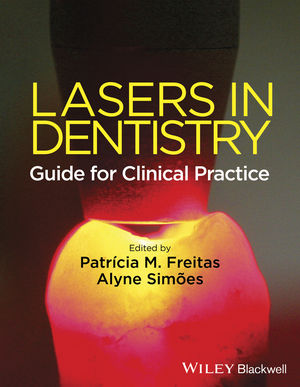 "Lasers have become an increasingly useful tool in conventional dental practice. Their precision and less invasive quality make them an attractive technology in esthetic and pediatric dentistry, oral medicine, and a range of other dental procedures. Lasers in Dentistry: Guide for Clinical Practice is a comprehensive, yet concise and easy-to-use guide to integrating lasers into conventional clinical practice.
"Lasers have become an increasingly useful tool in conventional dental practice. Their precision and less invasive quality make them an attractive technology in esthetic and pediatric dentistry, oral medicine, and a range of other dental procedures. Lasers in Dentistry: Guide for Clinical Practice is a comprehensive, yet concise and easy-to-use guide to integrating lasers into conventional clinical practice.
"The book begins by providing the reader a thorough understanding of how lasers work and their varied effects on oral tissues. Subsequent chapters are organized by procedure type, illustrating common clinical techniques with step-by-step illustrations and case examples. In addition, each chapter provides an overview of the latest research for use in clinical practice. More comprehensive than at atlas yet practical and clinically oriented in its approach, Lasers in Dentistry is an essential tool for practitioners and students looking to broader their skill set in laser dentistry."
Layer-by-layer films for biomedical applications / edited by C. Picart, F. Caruso, and J-C. Voegel
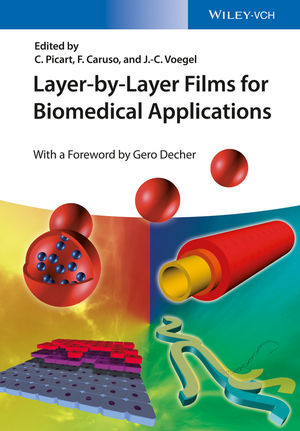 "The layer-by-layer (LbL) deposition technique is a versatile approach for preparing nanoscale multimaterial films: the fabrication of multicomposite films by the LbL procedure allows the combination of literally hundreds of different materials with nanometer thickness in a single device to obtain novel or superior performance. In the last 15 years the LbL technique has seen considerable developments and has now reached a point where it is beginning to find applications in bioengineering and biomedical engineering.
"The layer-by-layer (LbL) deposition technique is a versatile approach for preparing nanoscale multimaterial films: the fabrication of multicomposite films by the LbL procedure allows the combination of literally hundreds of different materials with nanometer thickness in a single device to obtain novel or superior performance. In the last 15 years the LbL technique has seen considerable developments and has now reached a point where it is beginning to find applications in bioengineering and biomedical engineering.
"The book gives a thorough overview of applications of the LbL technique in the context of bioengineering and biomedical engineering where the last years have witnessed tremendous progress. The first part familiarizes the reader with the specifics of cell-film interactions that need to be taken into account for successful application of the LbL method in biological environments. The second part focuses on LbL-derived small drug delivery systems and antibacterial agents, and the third part covers nano- and microcapsules as drug carriers and biosensors. The fourth and last part focuses on larger-scale biomedical applications of the LbL method such as engineered tissues and implant coatings."
 "Digital equipment in all dental practices is commonplace. From digital imaging through electronic recordkeeping, general dentists and specialists are seeing more accurate diagnoses, faster treatment times, and lower costs for equipment.
"Digital equipment in all dental practices is commonplace. From digital imaging through electronic recordkeeping, general dentists and specialists are seeing more accurate diagnoses, faster treatment times, and lower costs for equipment."Here in one volume is a comprehensive look at the digital technology available, describing indications, contraindications, advantages, disadvantages, limitations, and applications in the various dental fields. Included are digital imaging, digital impressions, digital operative dentistry, digital prosthodontics, digital implant fabrication and placement, and digital applications in endodontics, orthodontics, and oral surgery. The book is ideal for dental students seeking a reference for digital dental technology and for seasoned practitioners and specialists interested in incorporating digital technology in their daily practice."
Early childhood and oral health, 2nd edition / edited by J.H. Berg and R.L. Slayton
"Dental caries has been called a "silent epidemic" and is the most prevalent chronic disease affecting children. Though much has been written on the science and practice of managing this disease, publications are diverse in their loci, preventing easy access to the reader. Early Childhood Oral Health coalesces all the important information related to this topic in a comprehensive reference for students, academics, and practitioners.
 "This second edition expands the scope of the first and puts an additional focus on interprofessional and global efforts that are necessary to manage the growing disease crisis and screening and risk assessment efforts that have expanded with the boom of new technologies. With updated references and incorporating the latest research, chapters address the biology and epidemiology of caries, the clinical management of early childhood caries, risk assessment, and early diagnosis. Other topics include public health approaches to managing caries worldwide, implementation of new caries prevention programs, fluoride regimens, and community programs, and family oral health education. Brand new are four chapters on the medical management of early childhood caries, considerations for children with special needs, interprofessional education and practice, and how the newest policy issues and the Affordable Care Act affect dental care.
"This second edition expands the scope of the first and puts an additional focus on interprofessional and global efforts that are necessary to manage the growing disease crisis and screening and risk assessment efforts that have expanded with the boom of new technologies. With updated references and incorporating the latest research, chapters address the biology and epidemiology of caries, the clinical management of early childhood caries, risk assessment, and early diagnosis. Other topics include public health approaches to managing caries worldwide, implementation of new caries prevention programs, fluoride regimens, and community programs, and family oral health education. Brand new are four chapters on the medical management of early childhood caries, considerations for children with special needs, interprofessional education and practice, and how the newest policy issues and the Affordable Care Act affect dental care."A must-read for pediatric dentists, cariologists, public health dentists, and students in these fields, Early Childhood Oral Health is also relevant for pediatricians and pediatric nursing specialists worldwide."
Handbook of clinical techniques in pediatric dentistry / edited by J.A. Soxman
 Handbook of polymers for pharmaceutical technologies : structure and chemistry, volume 1 / edited by V.K. Thakur and M.K. Thakur
Handbook of polymers for pharmaceutical technologies : structure and chemistry, volume 1 / edited by V.K. Thakur and M.K. ThakurHandbook of polymers for pharmaceutical technologies : processing and applications, volume 2 / edited by V.K. Thakur and M.K. Thakur
"Polymers are one of the most fascinating materials of the present era finding their applications in almost every aspects of life. Polymers are either directly available in nature or are chemically synthesized and used depending upon the targeted applications. Advances in polymer science and the introduction of new polymers have resulted in the significant development of polymers with unique properties. Different kinds of polymers have been and will be one of the key in several applications in many of the advanced pharmaceutical research being carried out over the globe.
 "This 4-partset of books contains precisely referenced chapters, emphasizing different kinds of polymers with basic fundamentals and practicality for application in diverse pharmaceutical technologies. The volumes aim at explaining basics of polymers based materials from different resources and their chemistry along with practical applications which present a future direction in the pharmaceutical industry. Each volume offer deep insight into the subject being treated."
"This 4-partset of books contains precisely referenced chapters, emphasizing different kinds of polymers with basic fundamentals and practicality for application in diverse pharmaceutical technologies. The volumes aim at explaining basics of polymers based materials from different resources and their chemistry along with practical applications which present a future direction in the pharmaceutical industry. Each volume offer deep insight into the subject being treated." The 4-partset also includes the following volumes:
Volume 3: Biodegradable Polymers (not yet available)
Volume 4: Bioactive and Compatible Synthetic/Hybrid Polymers (not yet available)
Implant restorations : a step-by-step guide, 3rd edition / by C. Drago
This book "offers clinicians a practical, step-by-step approach to treatment planning and restoring dental implants. This highly illustrated, case-based book demonstrates how to treat the most commonly encountered treatment scenarios, describing the procedures, techniques, and sequences required in clear, concise language and in an easy-to-use format. The book takes the theory of implant restoration, using as its basis 3i's implant systems, and places it directly in the operatory, concentrating in detail on each stage of the actual clinical procedures involved in treating different patients. It integrates implant treatment with the realities of running a successful restorative practice. Building on the work of the 2nd edition, the 3rd edition of this successful text reflects the advances of implant prosthetics over the intervening years, providing all new cases, exploring new techniques and technology, and demonstrating updated system components and armamentarium."
"An excellent and accessible guide on the most burgeoning subject in modern dental practice by one of its most experienced clinicians, Implant Restorations: A Step-by-Step Guide, Third Edition will appeal to prosthodontists, general dentists, implant surgeons, dental students, dental laboratory technicians and dental assistants."
Implant site development / edited by M. Sonick and D. Hwang
"Highly illustrated, Implant Site Development presents diagrams and clinical photographs to aid with clinical judgment and will prove useful for any dental professional involved in implant therapy, from general practitioners to prosthodontists, but especially surgeons. This literature-based, yet user-friendly, reference will be indispensable to the novice or veteran clinician."
Lasers in dentistry : guide for clinical practice / edited by P.M. de Freitas and A. Simoes
 "Lasers have become an increasingly useful tool in conventional dental practice. Their precision and less invasive quality make them an attractive technology in esthetic and pediatric dentistry, oral medicine, and a range of other dental procedures. Lasers in Dentistry: Guide for Clinical Practice is a comprehensive, yet concise and easy-to-use guide to integrating lasers into conventional clinical practice.
"Lasers have become an increasingly useful tool in conventional dental practice. Their precision and less invasive quality make them an attractive technology in esthetic and pediatric dentistry, oral medicine, and a range of other dental procedures. Lasers in Dentistry: Guide for Clinical Practice is a comprehensive, yet concise and easy-to-use guide to integrating lasers into conventional clinical practice. "The book begins by providing the reader a thorough understanding of how lasers work and their varied effects on oral tissues. Subsequent chapters are organized by procedure type, illustrating common clinical techniques with step-by-step illustrations and case examples. In addition, each chapter provides an overview of the latest research for use in clinical practice. More comprehensive than at atlas yet practical and clinically oriented in its approach, Lasers in Dentistry is an essential tool for practitioners and students looking to broader their skill set in laser dentistry."
Layer-by-layer films for biomedical applications / edited by C. Picart, F. Caruso, and J-C. Voegel
 "The layer-by-layer (LbL) deposition technique is a versatile approach for preparing nanoscale multimaterial films: the fabrication of multicomposite films by the LbL procedure allows the combination of literally hundreds of different materials with nanometer thickness in a single device to obtain novel or superior performance. In the last 15 years the LbL technique has seen considerable developments and has now reached a point where it is beginning to find applications in bioengineering and biomedical engineering.
"The layer-by-layer (LbL) deposition technique is a versatile approach for preparing nanoscale multimaterial films: the fabrication of multicomposite films by the LbL procedure allows the combination of literally hundreds of different materials with nanometer thickness in a single device to obtain novel or superior performance. In the last 15 years the LbL technique has seen considerable developments and has now reached a point where it is beginning to find applications in bioengineering and biomedical engineering."The book gives a thorough overview of applications of the LbL technique in the context of bioengineering and biomedical engineering where the last years have witnessed tremendous progress. The first part familiarizes the reader with the specifics of cell-film interactions that need to be taken into account for successful application of the LbL method in biological environments. The second part focuses on LbL-derived small drug delivery systems and antibacterial agents, and the third part covers nano- and microcapsules as drug carriers and biosensors. The fourth and last part focuses on larger-scale biomedical applications of the LbL method such as engineered tissues and implant coatings."
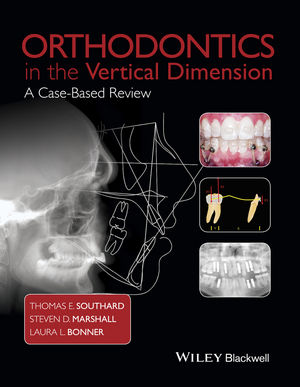 "This case-based clinical text is an exhaustive review of orthodontic problems in the vertical dimension and evidence-based guidelines for successful diagnosis and treatment. A total of 21 cases address dental deep bites, skeletal deep bites, dental open bites, skeletal open bites, and posterior open bites. Each case includes pre-treatment, interim, and posttreatment orthodontic records, as well as references to provide a solid evidence base for decision making. Written with a clinical focus, Orthodontics in the Vertical Dimension is ideal for the practicing orthodontist and makes an excellent resource for residents in pursuit of board certification."
"This case-based clinical text is an exhaustive review of orthodontic problems in the vertical dimension and evidence-based guidelines for successful diagnosis and treatment. A total of 21 cases address dental deep bites, skeletal deep bites, dental open bites, skeletal open bites, and posterior open bites. Each case includes pre-treatment, interim, and posttreatment orthodontic records, as well as references to provide a solid evidence base for decision making. Written with a clinical focus, Orthodontics in the Vertical Dimension is ideal for the practicing orthodontist and makes an excellent resource for residents in pursuit of board certification."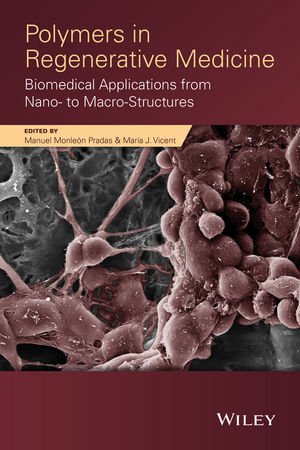
"The ability of polymers to span wide ranges of mechanical properties and morph into desired shapes makes them useful for a variety of applications, including scaffolds, self-assembling materials, and nanomedicines. With an interdisciplinary list of subjects and contributors, this book overviews the biomedical applications of polymers and focuses on the aspect of regenerative medicine. Chapters also cover fundamentals, theories, and tools for scientists to apply polymers in the following ways:
- Matrix protein interactions with synthetic surfaces
- Methods and materials for cell scaffolds
- Complex cell-materials microenvironments in bioreactors
- Polymer therapeutics as nano-sized medicines for tissue repair
- Functionalized mesoporous materials for controlled delivery
- Nucleic acid delivery nanocarriers
Concepts include macro and nano requirements for polymers as well as future perspectives, trends, and challenges in the field. From self-assembling peptides to self-curing systems, this book presents the full therapeutic potential of novel polymeric systems and topics that are in the leading edge of technology."
Progress in adhesion and adhesives / edited by K.L. Mittal
"This book is based on the 13 review articles written by subject experts and published in 2014 in the Journal Reviews of Adhesion and Adhesives. The rationale for publication of this book is that currently the RAA has limited circulation, so this book provides broad exposure and dissemination of the concise, critical, illuminating, and thought-provoking review articles. The subjects of the reviews fall into 4 general areas:
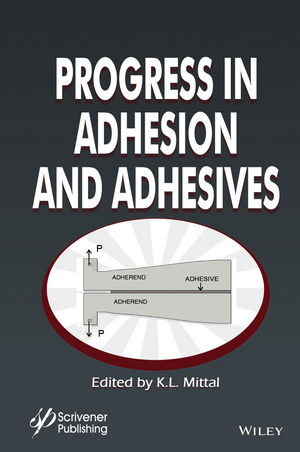
The ADA practical guide to substance use disorders and safe prescribing / edited by M. O'Neil
Progress in adhesion and adhesives / edited by K.L. Mittal
"This book is based on the 13 review articles written by subject experts and published in 2014 in the Journal Reviews of Adhesion and Adhesives. The rationale for publication of this book is that currently the RAA has limited circulation, so this book provides broad exposure and dissemination of the concise, critical, illuminating, and thought-provoking review articles. The subjects of the reviews fall into 4 general areas:

- Polymer surface modification
- Biomedical, pharmaceutical and dental fields
- Adhesives and adhesive joints
- General Adhesion Aspects
The ADA practical guide to substance use disorders and safe prescribing / edited by M. O'Neil
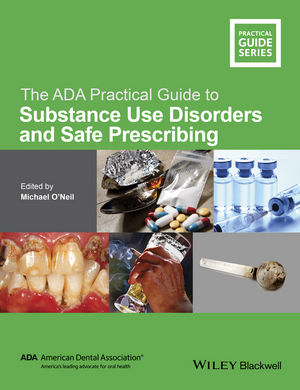
"Dentists have been inundated by patients with an array of complicated medical conditions and pain/sedation management issues. This is in addition to a variety of legal regulations dentists must follow regarding the storage and recordkeeping of controlled substances. Avoid unknowingly putting your practice at risk by becoming victim to a scam or violating a recordkeeping requirement with [... t]his Practical Guide, [...] ideal for dentists and staff as they navigate:
- Detecting and deterring substance use disorders (SUD) and drug diversion in the dental office (drug-seeking patients)
- Prescribing complexities
- Treating patients with SUD and complex analgesic and sedation (pain/sedation management) needs and the best use of sedation anxiety medication
- Interviewing and counselling options for SUD
- Federal drug regulations
- Commonly used illicit, prescription, and over-the-counter drugs, as well as alcohol and tobacco, are also covered.
- Clinical tools proven to aid in the identification, interviewing, intervention, referral and treatment of SUD
- Basic elements of SUD, acute pain/sedation management, and drug diversion
- Summary of evidence-based literature that supports what, when and how to prescribe controlled substances to patients with SUD
- Discussion of key federal controlled substance regulations that frequently impact dental practitioners
- Checklists to help prevent drug diversion in dental practices
- Chapter on impaired dental professionals
- Case studies that examine safe prescribing and due diligence"

2 comments:
how to brush your young children's teeth, how to calm a child who is afraid of the dentist, how to help special needs children get proper dental care, how medical problems affect teeth, how fluoride rinses and dental sealants work, Nanoparticle Characterization Techniques
Hey thanks for this amazing post. Would love to read more of such blogs. You can also have a look at affordable practice management software for dentists for more information.
Post a Comment